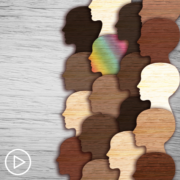MM Treatments and Clinical Trials Archives
When it comes to treatment, Multiple Myeloma patients and their care partners have much to consider. There are often many options available, each with advantages and disadvantages. Some people may seek clinical trials, others may have few feasible options. Understanding treatment options, goals, and what to expect are vital to achieving the best possible outcome for you.
More resources for Multiple Myeloma Treatments and Clinical Trials from Patient Empowerment Network.
Can Race or Ethnicity Impact CAR T-Cell Therapy Response?
Can Race or Ethnicity Impact CAR T-Cell Therapy Response? from Patient Empowerment Network on Vimeo.
Can CAR T-cell therapy response be impacted by patient race or ethnicity? Expert Dr. Sikander Ailawadhi from Mayo Clinic discusses some impacts to CAR T-cell therapy response for African Americans and some clinical methods to help reduce impacts to patients.
[ACT]IVATION TIP
“…there is a lot of work happening, research happening around how to predict and prevent side effects from CAR T so that the patients are much more informed, aware, can make an informed decision, and as clinicians, we can do whatever is within our control and is at our disposal to help prevent those side effects and make CAR T an even safer and more beneficial treatment for patients.”
See More from [ACT]IVATED CAR T
Related Resources:
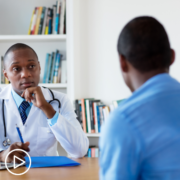
|
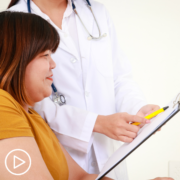
How Can Information Disparities on Emerging Therapies Be Addressed? |

|
Transcript:
Lisa Hatfield:
Dr. Ailawadhi, is there data around ethnicity and response to CAR T-cell therapy and whether genetic factors may affect treatment outcomes? And can the side effects of CAR T-cell therapy be predicted or prevented?
Dr. Sikander Ailawadhi:
So Lisa, a very important question of whether there are racial ethnic factors that can affect CAR T-cell therapy benefit or side effects, and what are we doing to prevent some of these side effects? We know side effects can happen, what can we do to actually prevent them? So I’ll take this question in two different subgroups. The first one of talking about racial ethnic groups or differences. So we know patients who are African Americans. This is one study reported that African Americans are more likely to have side effects from CAR T-cell therapy.
So while it’s not a specific “genetic factor,” but race ethnicity can sometimes be associated with more side effects, and that is just because these are very inflammatory delivered or inflammatory mediated side effects like CRS. It’s also important to know that there are certain other factors, disease or treatment-related factors, that can help predict potentially more side effects with CAR T. For example, patients who are very heavily pre-treated, patients who have a very high disease burden, patients who did not respond to bridging therapy that was given to them prior to the CAR T.
These are all factors where we know that side effects are going to be more, and the success of the treatment might be lesser. What we are trying to do to mitigate some of these side effects, there are now studies which are giving either some low doses of steroids as a prophylaxis before, right around the time of CAR T, so that side effects may not happen. Studies that are giving a low dose or even standard dose of what’s called tocilizumab (Actemra), toci, or tocilizumab.
This toci drug is an antidote for CRS or cytokine release syndrome. The thought is, well, why wait for the toci to be given after the side effect happens? Why not give it beforehand and prevent the CRS? Historically, there was a concern that steroids or toci given early on could affect the CAR T-cell viability or activity, but that’s not the case. For example, in lymphomas, there are clinical trials that have shown very clearly given prophylactic or preventative steroids could help. Using steroids or toci in a preventative manner is helping mitigate some of the side effects.
Well, by preventing the side effects, we are being able to give the treatment in a way that the patients may have lesser side effects and can get it done closer to home or at home sometimes, and their time to stay in the hospital is lesser. You can imagine that some of these barriers are being further mitigated.
My activation tip for this question is that there is a lot of work happening, research happening around how to predict and prevent side effects from CAR T so that the patients are much more informed, aware, can make an informed decision, and as clinicians, we can do whatever is within our control and is at our disposal to help prevent those side effects and make CAR T an even safer and more beneficial treatment for patients.
Share Your Feedback
How Are Rural CAR T-Cell Therapy Barriers Being Addressed?
How Are Rural CAR T-Cell Therapy Barriers Being Addressed? from Patient Empowerment Network on Vimeo.
How are barriers to CAR T-cell therapy care in rural areas being reduced? Expert Dr. Sikander Ailawadhi from Mayo Clinic discusses positive patient care developments from COVID and how patients can help optimize their care.
[ACT]IVATION TIP
“…over these past few years, post-COVID, we have learned how to deliver healthcare in a more patient-centric manner, and we are using those factors, those tools, those techniques, to be able to bring CAR T and its associated care to a lot of many more patients. I still would like patients to seek out care as and when possible.”
See More from [ACT]IVATED CAR T
Related Resources:

|

How Can Information Disparities on Emerging Therapies Be Addressed? |
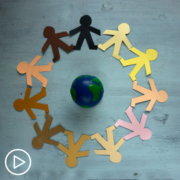
|
Transcript:
Lisa Hatfield:
Dr. Ailawadhi, logistical challenges exist in delivering CAR T-cell therapy to patients, especially in rural or underserved areas. Can you speak to any innovative delivery models that could improve access?
Dr. Sikander Ailawadhi:
This is an extremely important, but also an exciting question to ask, Lisa, whether we have some interesting models or innovative healthcare delivery models that are trying to overcome some of these access barriers to CAR T-cell therapy. So, one thing that COVID has taught us is that medicine does not need to be delivered or healthcare does not need to be delivered in a cookie cutter fashion as we were doing it before. Suddenly, after COVID, I’m glad that we all as a community, as a society, pivoted and started delivering telemedicine care.
So, we are still doing a lot of telemedicine. I’ll give you the example of one case who’s near and dear to me, because she did come through a lot of adversity to get to this point. A relatively younger lady with multiple myeloma, who’s an international patient, and she came from Middle East, she had already received two transplants and had run through all the treatment options available locally.
She had some family members and some means that she could actually come here, so she came to the U.S., did a consult, we did a visit, we took over her treatment, she got CAR T, but then a month or so after that she was doing fine and she wanted to go back home. She was here with some family members living in a foreign country, not speaking the language, et cetera. Her children were very supportive and spoke English. So, she went back and I still continue to do video visits with her just to see how she’s doing, monitor her disease, she sends me records through the electronic medical system portal, I can see her labs, and I think it gives me peace of mind that I’m keeping an eye on it, it gives her peace of mind.
And I don’t think a lot of it would have been possible without the tools that we have at our disposal, now, for example, telemedicine. Now, certain institutions do have other opportunities, like they have mobile clinics, they will actually go to the patients where they are. We, for example, at Mayo Clinic in the Midwest, in Minnesota, we have a health system that is present throughout three different states in the Midwest, where we have smaller clinics where the patients could go to and receive all their care, except for the CAR T portion for which they can come to the main site.
We also have something set up, for example, at Mayo called remote patient monitoring. We have something called acute care at home, in which we are providing a lot of this CAR T-cell therapy as an outpatient. Patients can receive their cells but can be discharged very early. And then a lot of these remote monitoring services we are using to help patients stay where they are, feel safe, not being stuck in a hospital room, and are able to receive their care sometimes in their homes with their caregivers and family members by their side, and they feel more comfortable about it.
So a lot of these things that we are doing to provide access to care to patients, and I would also say, this is helping overcome some healthcare disparities also, because some of those patients who have challenges or barriers to the access, but by doing these innovative things of telemedicine, at home care, remote monitoring care, et cetera, we are suddenly overcoming some of those barriers. For example, the patient needing to go to the hospital, the patient needing to have a caregiver who has to miss time from work just because they have to be at the hospital, et cetera.
So my activation tip for this question is that over these past few years, post-COVID, we have learned how to deliver healthcare in a more patient-centric manner, and we are using those factors, those tools, those techniques, to be able to bring CAR T and its associated care to a lot of many more patients. I still would like patients to seek out care as and when possible.
Share Your Feedback
How Do Race and Ethnicity Impact CAR T Side Effects?
How Do Race and Ethnicity Impact CAR T Side Effects? from Patient Empowerment Network on Vimeo.
How are CAR T side effects impacted by race and ethnicity? Expert Dr. Sikander Ailawadhi from Mayo Clinic shares some research study results about CAR T response rates and disease progression in African American and Hispanic patients and solutions for clinicians.
[ACT]IVATION TIP
“…there are some differences by race, ethnicity, specifically for the side-effect profile, patients should be aware of it, and clinicians who are the CAR T specialists should be aware of it so that they can manage the side effects well in their patients.”
See More from [ACT]IVATED CAR T
Related Resources:

|

How Can Information Disparities on Emerging Therapies Be Addressed? |

|
Transcript:
Lisa Hatfield:
Dr. Ailawadhi, real-world data from one of the available CAR-T-cell therapies, ide-cel (Abecma), has shown some differences in the side effect profile and benefit by patient race and ethnicity. What is your take on this, and how do you utilize this in your clinical practice? And also, what do you think researchers should do next to learn more about how CAR T therapies affect different people?
Dr. Sikander Ailawadhi:
This is an extremely important question, looking at what is the data currently on the risks and benefits of CAR T-cell therapy in patients from different racial ethnic groups, and then how are we using that in the clinic today and where should the field go about research in this area. So, Lisa, you’ve correctly pointed out that this study that was published recently is based on some real world data from one of the CAR T cells available, ide-cel.
Now, I shouldn’t say that this is specifically to ide-cel, but basically, ide-cel has been around a little bit longer than cilta-cel (Carvykti), and so the real-world data on ide-cel was to the point that this racial ethnic analysis could be done, and it was reported. That said, we don’t know how cilta-cel would be. That data just does not exist. So, I’m not saying that this is applicable to cilta-cel or not, because at least this study was specifically for ide-cel because that data was mature enough to be reported. That was just a qualifier of this particular question.
Now, what that study showed was that some of the side effects, including CRS, the cytokine release syndrome, and certain markers that can be an accompaniment of CRS, like the ferritin or what’s called CRP, C-reactive protein, which are inflammatory markers. So, inflammatory markers were higher in African Americans, and the CRS was also higher in African Americans from that real-world data.
The other thing that it showed was that the response rates were lower in Hispanics, but the progression-free survival, meaning time it took for the disease to progress and require more treatment, was lower in African Americans or overall survival was same across the racial ethnic groups. So, side effects a little bit more in African Americans, and the immediate response, a little bit less in Hispanics, but overall outcome, similar across races. Now, this is important for us to know because African Americans tend to have certain inflammatory disorders more frequently, like even asthma is seen more frequently in African Americans.
So, CRS, which is an immune system mediated inflammatory response, I can imagine that some of it might be higher in African Americans. So, in our clinics, what we are doing is when we are monitoring the patients, every patient is getting monitored the same way, but when it’s an African American patient, we are putting a little bit more focus on those inflammatory markers that can sometimes start showing up even before the CRS happens. I don’t think the response rate portion of Hispanics that we’re really taking into account much because the overall outcome or the long-term outcome was not really different between races and ethnicities.
Of course, there needs to be much more research, so I think we need longer-term follow-up data, we need larger number of patient data, and what I alluded to in the very beginning, we do need data on cilta-cel also, which has not yet been presented, but we are hoping that it will come out very soon. So, my activation tip for this question is, that there are some differences by race, ethnicity, specifically for the side-effect profile, patients should be aware of it, and clinicians who are the CAR T specialists should be aware of it so that they can manage the side effects well in their patients.
Share Your Feedback
How Can Information Disparities on Emerging Therapies Be Addressed?
How Can Information Disparities on Emerging Therapies Be Addressed? from Patient Empowerment Network on Vimeo.
How can gaps in information about emerging myeloma therapies be reduced? Expert Dr. Sikander Ailawadhi from Mayo Clinic discusses some demographic characteristics of information disparities and advice for myeloma experts and patient advocates to help bridge information gaps.
[ACT]IVATION TIP
“…I would highly encourage all my fellow clinicians, educators, researchers, and myeloma academicians to please consider developing some of these thresholds in your clinics so that if a patient is even able to come through the door and sees you, they are able to gain access to resources, or you’re able to bring together higher amount of resources specifically for that patient’s needs.”
See More from [ACT]IVATED CAR T
Related Resources:

|

|

|
Transcript:
Lisa Hatfield:
Recent studies have identified demographic characteristics such as higher education, residency in certain regions, and urban or suburban living as factors influencing awareness and understanding of novel myeloma treatments. How can healthcare organizations tailor educational initiatives to reach underserved populations and address these disparities in access to information and understanding of emerging therapies?
Dr. Sikander Ailawadhi:
Lisa, this is a very interesting and important question. And as you were pointing out, studies that are talking about education level residency in certain geographical regions or urban/suburban areas, and that may be affecting the patient’s understanding and awareness of novel myeloma treatments. I kind of smile a little bit because one of those studies is ours that we conducted in about close to 2,300, 2,400 patients where we surveyed patients about CAR T-cell therapy and bispecific antibodies.
And what we found out is that there were a lot of differences. Patients with higher education where their information was closer to the correct information. I mean, there are sometimes gaps everywhere, but the patients with lower education in certain parts of the country or who identify as being from a rural area, they tend to have many more gaps and misconceptions about treatments.
So, while it was a novel finding, I wasn’t really surprised in seeing that. Because historically, our patients who are in rural areas, who are lower income or lower education strata, they tend to be underserved and underrepresented and just underserved. So what we’re trying our best to do is when we create the education initiatives, we are trying to, one, disseminate it across the board. So for example, studies like this, study gives results. We are working on writing the manuscript and publishing it so that anybody and everybody can read that and find out and say, “Oh, you know what, this is something that the people over at Mayo Clinic in their study found. Most likely it is applicable to us also.
So either we should look for that finding, or we should just try to mitigate it. We should just work on it.” So developing the education material and spreading it far and wide, we are strongly considering also that the results of these studies should be shared with our patients. Why not? I mean, forums like this or even for that matter, our other support group programs and other education initiatives, we are trying to disseminate these study results with the patients because they need to know about it.
And then when we are…as you rightly asked, how are we tailoring these education initiatives? I think the idea is we are trying to disseminate it far and wide. We are also trying to share it with institutions that may have a larger catchment population of these underserved groups. And then when we are putting together these initiatives, these education initiatives…or I should say, from a different standpoint, when patients come to our institution, we have certain triggers that we have set up.
So if somebody is African American or Hispanic, or if somebody in the EMR, in the electronic medical record system, has identified themselves coming from a rural area background, or if somebody has what’s called certain social determinants of health that are captured by the electronic medical record, and if they have some flags there, I think my threshold of getting a social work consult for that person or providing extra education material, that threshold goes down. We have that set up in our clinics.
So certain characteristics will qualify the patient to be able to access more information just because we feel that that is the group that tends to be traditionally underserved. So my activation tip for this question is, while we will try our best to provide information as far and wide as possible, I would highly encourage all my fellow clinicians, educators, researchers, and myeloma academicians to please consider developing some of these thresholds in your clinics so that if a patient is even able to come through the door and sees you, they are able to gain access to resources, or you’re able to bring together higher amount of resources specifically for that patient’s needs.
Share Your Feedback
How Can Equitable CAR T-Cell Therapy Access Be Increased?
How Can Equitable CAR T-Cell Therapy Access Be Increased? from Patient Empowerment Network on Vimeo.
How can CAR T-cell therapy access issues be reduced? Expert Dr. Sikander Ailawadhi from Mayo Clinic explains some common access issues that can arise for patient CAR T care and some ways that providers and patient advocates are raising awareness about support resources.
[ACT]IVATION TIP
“…from a patient’s standpoint and role, while institutions are trying their best to provide the care wherever they can, from a patient standpoint, understanding what might be the specific barriers in their case to get to CAR T and trying to get to an institution that has the resources to help overcome and mitigate some of those barriers would be very important.”
See More from [ACT]IVATED CAR T
Related Resources:

How Can Information Disparities on Emerging Therapies Be Addressed? |

|

|
Transcript:
Lisa Hatfield:
How can healthcare systems ensure equitable access to CAR T-cell therapy for all eligible patients, regardless of demographic or economic factors?
Dr. Sikander Ailawadhi:
Lisa, it’s an important question of how do healthcare systems, what role they can play in providing equitable access to CAR T-cell therapy or care in general. And I think it’s also important to figure out what is the patient’s role in this, in addition to the healthcare system’s role. So, there are some institution-specific things, I don’t want to say issues or problems or whatever concerns, but things that sometimes can be barriers or sometimes are non-modifiable. For example, the type of insurances that are accepted or sometimes, for cell therapy, insurance companies actually have preferred centers they want patients to go to. That happens for stem cell transplant, that also happens for CAR T.
And a lot of that happens based on how the contracts are kind of designed or contracts are negotiated between an institution and an insurance company, et cetera, et cetera. I’ll be very frank, a lot of those details are way beyond my pay grade, so I won’t be able to go into the specifics of that. But what I can say is, a patient may not be able to…based on certain barriers, certain criteria, a patient may not be able to access CAR T-cell therapy at certain centers.
For example, let’s say there’s a patient in the Jackson metro area where I am, and they would like to come to Mayo Clinic, but their insurance and Mayo Clinic are not compatible. The patient may not be able to come for cell therapy, but yeah, that patient may be able to at least seek a consult. And through that consult, we’ll be able to then either connect the patient with a different center or give them details about, “hey, you know what, why don’t you consider going to X, Y, or Z and get the treatment over there?” I’ll be very frank, unlike the general thoughts around, well, everybody wants the patient to only come to them, I think those of us who are clinicians, academicians, educators, researchers, we want the right answer for every single patient. Whether that patient comes to me, one of my colleagues in a different institutions, one of my “competitors” in a different institution, it doesn’t matter, as long as the right treatment is coming to the patient.
So I think if a patient is not able to get to a treatment like CAR T, they need to understand, “What is the reason? Why am I not being able to get into it? Is there a barrier for distance, resources, insurance, education, just caregiver support? Why is it that I’m not getting it?” There should be enough buzz around CAR T that everybody should say, “Well, am I a candidate? If not, why not?” And once we find out what is the problem, that can be addressed. We are working quite hard in trying to get some of those accesses around the patients and different groups of patients, making them more equitable.
So for example, we do provide every CAR T-cell therapy patient with a social work consult. That social worker’s job is to figure out what are these barriers for that patient. But I understand that’s for the patients who have already come through the door to seeing us. But if a patient is not able to come to us because of some reason, as an institution, we are also making some efforts in trying to get more awareness and education to patients who are not coming to us, but are say, going to other institutions.
We are setting up webinars, going to patient support groups, talking, doing programs like this so that the information can be disseminated far and wide and anybody and everybody can benefit from it. So my activation tip for this question is, that from a patient’s standpoint and role, while institutions are trying their best to provide the care wherever they can, from a patient standpoint, understanding what might be the specific barriers in their case to get to CAR T and trying to get to an institution that has the resources to help overcome and mitigate some of those barriers would be very important.
Lisa Hatfield:
Thank you. That is why patients appreciate you because you’re willing to do what it takes to take care of your patients, even if it means sending them somewhere else. That is a characteristic of an excellent physician.
Share Your Feedback
How Are Cultural and Language Barriers to CAR T Therapy Being Addressed?
How Are Cultural and Language Barriers to CAR T Therapy Being Addressed? from Patient Empowerment Network on Vimeo.
How are CAR T therapy barriers of cultural and language nature being addressed? Expert Dr. Sikander Ailawadhi from Mayo Clinic discusses research study results on access barriers and ways to create solutions that address language and cultural issues.
[ACT]IVATION TIP
“…having a culturally sensitive discussion and a system that approaches the patients for complex treatments like CAR T or clinical trials. And personally, I’ve seen that it makes a big difference to the patient’s consideration of those treatment options.”
See More from [ACT]IVATED CAR T
Related Resources:

How Can CAR T-Cell Therapy Be Explained to Patients and Families? |
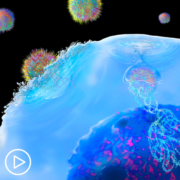
Reducing CAR T-Cell Therapy Barriers for Relapsed/Refractory Myeloma |

Roadblocks for Black and Latinx Patients From CAR T Trial Access |
Transcript:
Lisa Hatfield:
Dr. Ailawadhi, we know cultural or language barriers may hinder access to information about CAR T-cell therapy. How are you and your colleagues addressing this barrier?
Dr. Sikander Ailawadhi:
It’s very important to think about cultural or language barriers and how they may affect our way we deliver the care and the way the patients consume that healthcare. A few years ago we had done a study looking at just electronic medical record usage and how patients participate in their EMRs, for example. And we realized that for patients who are non-white, language barrier was a big issue because frankly, majority of our EMRs are English. They don’t provide a lot of Spanish or other language support.
Similarly, clinical trials and education material for CAR T, et cetera, they are very frequently in English. There is an increasing number of Spanish documents that are becoming available. So how we try to overcome these barriers, I think we have started, utilizing an approach in our institution where our research staff, we are trying to hire a diverse population.
There is data that based on studies, it has been very clearly shown before that, a patient is more likely to consider favorably a clinical trial or a treatment if it is being offered by someone who look and speak like them. So an African American patient is more likely to accept or consider a treatment, I would say, not even accept, but consider a treatment if it is being offered by an African American physician, an African American clinical research coordinator, et cetera.
While I’m not African American, I can’t change that, but we have African American, Hispanic, Asian clinical research coordinators in our teams, and we have noticed a clear difference in the patient’s understanding their ability to ask questions, their willingness to ask questions and clear out their barriers if it is given to them in a culturally sensitive, culturally appropriate manner. So my activation tip for this question would be, having a culturally sensitive discussion and a system that approaches the patients for complex treatments like CAR T or clinical trials. And personally, I’ve seen that it makes a big difference to the patient’s consideration of those treatment options.
Share Your Feedback
Roadblocks for Black and Latinx Patients From CAR T Trial Access
Roadblocks for Black and Latinx Patients From CAR T Trial Access from Patient Empowerment Network on Vimeo.
What are CAR T-cell therapy roadblocks for Black and Latinx trial access? Expert Dr. Sikander Ailawadhi from Mayo Clinic discusses barriers that have been documented in clinical research and solutions and patient advice for overcoming barriers.
[ACT]IVATION TIP
“…please seek out a specialist center that specializes not only in myeloma, but also in CAR T and in clinical trials, and even at that center, seek out the physician who has part an experience of participating in clinical trials.”
See More from [ACT]IVATED CAR T
Related Resources:
Transcript:
Lisa Hatfield:
Dr. Ailawadhi, there is so much promise around CAR T-cell therapy, but barriers exist. Can you speak to the roadblocks that prevent Black and Latinx patients from participating in CAR T-cell therapy trials that you have witnessed?
Dr. Sikander Ailawadhi:
Lisa, this question about healthcare disparities and access to care, especially based on patient race ethnicity, it’s very near and dear to my heart. I do a lot of work around this and also a lot of research. Not just for CAR T, data has been very clear over years and decades that in multiple myeloma and frankly, in all cancers also. Clinical trial access is dismal when it comes to African Americans and Hispanic patients. Unfortunately, a lot of that data does not even exist about Hispanic patients.
But the publications are very clear with, so we’ve had one publication of ours, and then there has been one other from national data where FDA-approved drugs clinical trials were evaluated. And it was noted that while African American patients make up about 20 percent of the U.S. myeloma population, less than 5 percent of them participated in clinical trials that led to FDA approval of myeloma drugs.
‘m not saying that is specific for CAR T. In recent years when the CAR T trials were happening, the numbers have improved a little bit. They’re still not the same numbers representing myeloma population in the US, but some improvements happened, for sure. The barriers to getting onto CAR T and clinical trials related to such resource and time intensive treatments are multifactorial.
A lot of times they are sociodemographic, patients need to take time away from work. They have to have a caregiver, they have to have appropriate insurance approvals for certain things. They have to be able to go to a center that may be close to them. These centers are hopefully going to be able to bring some other resources like social workers, navigators, et cetera, to help that patient get onto the trial. And then there is sometimes lack of awareness of CAR T, lack of awareness of clinical trials per se, clinical, and there are fears, anxiety, scares around getting on clinical research.
Lots of barriers, I think we can systematically take care of mitigating them. I would again say, just as I mentioned previously in a different context, one simple way of trying to overcome barriers or at least making attempts to overcome barriers, is to get to a center that specializes in CAR T, that specializes in clinical trials and speak with an expert, a physician who has a clinical trial track record.
Patients can research all of this, and if that falls in place, I’m sure some of these access barriers and some of these disparities can be overcome. My activation tip for this question is, please seek out a specialist center that specializes not only in myeloma, but also in CAR T and in clinical trials, and even at that center, seek out the physician who has part an experience of participating in clinical trials.
Share Your Feedback
Reducing CAR T-Cell Therapy Barriers for Relapsed/Refractory Myeloma
Reducing CAR T-Cell Therapy Barriers for Relapsed/Refractory Myeloma from Patient Empowerment Network on Vimeo.
How can CAR T-cell therapy barriers for relapsed/refractory myeloma be reduced? Expert Dr. Sikander Ailawadhi from Mayo Clinic shares his perspective about barriers to CAR T and advice for patients to reduce access issues.
[ACT]IVATION TIP
“…the number one way of mitigating any healthcare access issues or the fears and scares about CAR T is, speak with a CAR T designated expert at a center that gives CAR T-cell therapy, and then only make a decision whether you want CAR T therapy for yourself or your care, your loved one or not.”
See More from [ACT]IVATED CAR T
Related Resources:
Transcript:
Lisa Hatfield:
Dr. Ailawadhi, what are the most significant challenges or barriers that patients with relapsed/refractory myeloma face when considering CAR T-cell therapy as a treatment option? And how can these challenges be addressed to improve patient outcomes and access to care?
Dr. Sikander Ailawadhi:
Lisa, it’s very important for us to remember that while we talk about CAR T or advancements in myeloma, your question of what are the most significant challenges and barriers for patients with relapsed/refractory myeloma, and especially when they’re considering CAR T, and how do we try to overcome these challenges? This is a very important question. CAR T-cell therapy is very resource and a time-intensive treatment. Patients may not have a CAR T center close to them. They may have to go closer to a center, live there for about a month or so, or sometimes even more.
During this time, the treatment has to be controlled. There are approvals from insurance, there are tests required, in between treatment to control the disease, and then sometimes staying in the hospital, sometimes…and, of course, need for a caregiver, that is such an important requirement. Of course, the promise of treatment is that at the end of it, the patients may come out and maybe, with significant disease control.
But to get to that promised land, we have to walk through this…as I said, a time intensive and a resource intensive situation. Now, all of this is very daunting, is very anxiety provoking, is very scary, in fact. To me, the biggest way of overcoming these challenges, improving access to care, et cetera, is, let that patient see a qualified CAR T-cell center.
And importantly, a physician who gives CAR T-cell therapy, that one consult or one visit can take care of so many fears, anxiety, scares, et cetera, because frankly, all of our centers, all of us who focus on CAR T-cell therapy, we have a whole slew of resources at our disposal which we can bring together for the patients and their caregivers, whether it’s navigators, revenue or finance analysts, social workers, clinical psychologists, these are all a part and parcel of our CAR T-cell journey for a patient.
But frankly, I cannot bring those resources to a patient when they’re not even established with us, or they don’t even set foot through our doors. My activation tip for this question is the number one way of mitigating any healthcare access issues or the fears and scares about CAR T is, speak with a CAR T designated expert at a center that gives CAR T-cell therapy, and then only make a decision whether you want CAR T therapy for yourself or your care, your loved one or not.
Lisa Hatfield:
One quick question. Are you still seeing the bottlenecks for CAR-T therapy since it’s been FDA-approved? You have patients who want it but cannot access it because there’s a bottleneck with a process. Is that a barrier?
Dr. Sikander Ailawadhi:
It’s a good question. So in recent months, we have noticed that the initial bottleneck with availability of slots and numbers for CAR T, those bottlenecks are easing up quite a bit. With both the CAR T manufacturers in the U,S., there is hardly any wait list issue. And if patients are going to centers that are saying that, there’s too long of a wait list, we can’t get you to it, they should go to another center.
Share Your Feedback
How Can CAR T-Cell Therapy Be Explained to Patients and Families?
How Can CAR T-Cell Therapy Be Explained to Patients and Families? from Patient Empowerment Network on Vimeo.
How can patients and families be educated about CAR T-cell therapy? Expert Dr. Sikander Ailawadhi from Mayo Clinic discusses the approach he takes to explaining the treatment to those new to learning about CAR T.
See More from [ACT]IVATED CAR T
Related Resources:
Transcript:
Lisa Hatfield:
Dr. Ailawadhi, how do you explain CAR T therapy to your patients and families hearing about it for the first time?
Dr. Sikander Ailawadhi:
Lisa, that’s a very important question of how we explain CAR T to a patient, or their family members, of course, their caregivers. If we just take a step back and think about it, this is the most closed way are to science fiction in treating multiple myeloma. And so obviously, explaining that in terms that makes sense to them, gets them excited, but also gives them, one, the promise of the treatment and two, the appropriate details of potential side effects, et cetera, so that the patient can take an informed decision.
That boils down to the principle of shared decision making that all of us keep vying for. So the way I explain is that CAR T-cell therapy is based on the fact of taking a patient’s immune system, training it to go against that particular cancer and giving that hyper-activated or that activated trained immune system back to the patient.
And what we typically…the way I would explain that is that, some of these patients have had stem cell transplants before. It’s also important for me to keep comparing and contrasting with that. We explain to the patients that they typically undergo some testing to identify whether they’re candidates for CAR T or not, based on organ function, et cetera. Then we collect the T cells from their bloodstream. But as against stem cell transplant where the collection could have taken three to five days, T-cell collection is done only in one day in one sitting, outpatient.
And then those T cells are sent for manufacturing. During that time, the patient, we work on controlling their disease, and then those T cells are genetically modified. Some DNA for a target that is present on the myeloma cells, that is inserted into the T cells’ DNA.
The genetic material of a seeker is put into the T cells. Then those T cells are multiplied in the lab, and are sent back to us a few weeks later from the collection as a bag as the drug. And this has given back to the patients. Now, those trained activated T cells, have that seeker that they can specifically go and target a particular marker on the myeloma cells. In the case of both the CAR T cells that are currently FDA-approved, that, target on the myeloma cells is called BCMA. B-cell maturation antigen. So while the myeloma had that BCMA, the myeloma was growing because our immune system was not able to control it.
Now, the new…these activated T cells that came back or trained T cells, they have a seeker that can specifically go seek out the BCMA attached to it and kill those myeloma cells. And by the way, this BCMA is almost universally present on the myeloma cells. If I have to keep in mind an activation tip for this question of how do I explain CAR T-cell therapy is we take your immune system, as in the patient’s immune system, that immune system is trained to specifically go against the myeloma and is given back to the patients so that now those T cells are able to go and kill the myeloma, which was growing uncontrolled previously.
Share Your Feedback
PODCAST: Thrive | Considering CAR T-Cell Therapy for Myeloma? What You Should Know
Dr. Beth Faiman, a myeloma expert and researcher, discusses factors that should be considered when deciding to undergo CAR T-cell therapy, advice for preparing for and after the process, and why a good support team is essential. Dr. Faiman also shares research updates in CAR T-cell therapy, and alternatives options to this myeloma treatment.
See More From Thrive CAR T-Cell Therapy
Transcript:
Katherine Banwell:
Welcome. I’m your host, Katherine Banwell. As patients navigate their myeloma care, it’s essential for them to feel formed when engaging with their care team. That’s why the Patient Empowerment Network developed the Thrive series, to share support and educational resources so that patients can feel confident at every stage of their care. In today’s program, we’re going to hear from a renowned myeloma expert as we discuss CAR-T therapy. Before we meet today’s guest, please remember that this program is not a substitute for seeking medical advice. Please refer to your healthcare team about what might be best for you.
Well, joining us today is Dr. Beth Faiman. Dr. Faiman, welcome. Would you please introduce yourself?
Dr. Beth Faiman:
Thank you so much, Katherine, and it’s such an honor and a pleasure to be here today. My name is Beth Faiman. I am a nurse practitioner and a PhD researcher at the Cleveland Clinic in Cleveland, Ohio, where I have worked since 1994, in the field of myeloma mostly. Thank you.
Katherine Banwell:
Excellent. Thank you so much for joining us today. As I mentioned, today’s program is part of our Thrive series. So, from your perspective, what does it mean to thrive with myeloma?
Dr. Beth Faiman:
So, to thrive with myeloma is something that when I started managing patients in the 1990s individuals didn’t live very long, maybe two to three years, because we did not have good therapies. Now, we talk about living well with myeloma, thriving with myeloma. It just makes me so happy. I think for plants. I think of flowers that can grow in the right environment. I had a plant in my office recently that somebody had gifted me, and it sat there and tried to soak up the little bit of sunlight that it could muster and just wasn’t doing well.
So, I brought it home and I put it in a big window. That plant is beautiful now and I just love looking at it and thinking about it. And it reminds me of how if you’re in your right environment with multiple myeloma you surround yourself with friends, families, coworkers, church friends, or places of worship, then you can really thrive in that environment or you can grow. And even though you have a cancer diagnosis, that is not – and I hate to use the D-word – a death sentence anymore. You can live many years and live well with myeloma in the right environment like my little plant.
Katherine Banwell:
That’s a great idea to think about. Thank you. Well, we’ve covered this in recent webinars but it’s worth sharing again. Can you give us an overview of the process and timeline for someone choosing CAR T-cell therapy for myeloma treatment?
Dr. Beth Faiman:
Yes. So, CAR T-cell therapy, when we first started discussing this in the mid-2000s, I thought this was science fiction.
Taking somebody’s own cells, engineering them to be fighters against the cancer cells. I thought it was science fiction. But now, we have two FDA approved therapies for multiple myeloma. It’s Ide-cel, which was approved in 2021 and Cilta-cel, approved in 2022.
Now, the process is lengthy and I know you’ve covered this before but from my perspective, I think if you want to take something home form this webinar, plan early. So, you need to have three prior lines of therapy as a myeloma patient to qualify for this treatment. But you can start planning for it ahead of time.
So, it’s not available in every center. So, you want to start researching what the closest center would be for you to have this therapy. Many different patient support networks will have these centers on their websites. So anyhow, you find out.
“Okay. I want to learn more about a CAR T-cell therapy.” Then you have to meet with a specialist. So, you get that education, have that referral, and meet with a specialist at a center that does CAR T-cell therapy. And that might be where you got your initial transplant if you’ve then returned to the community. After that, then we find a slot for you when it’s ready. So, there is that process of financial, physical, social things that are checked in the background. You meet with a social worker, nurses, etc.
Once you’ve confirmed that you’re going to go through this process – now, it might be three, six, nine months in the future, if you’re a planner – but if you want to just gain information, it’s that harvesting and storing of the cells. That’s where I try to tell people age is not a number. You can be at any age and you qualify for this therapy. We’ve had people well into their late 70s to early 80s who have gotten these therapies.
Long story short, it’s a process.
You get your cells harvested and then while they’re being manufactured into fighters, they take the T cells from your blood through an apheresis machine and freeze them, send them off, make them into fighters, and then reinfuse them in your bloodstream. It’s a long process. It can take anywhere from two to three months from when you decide it’s right for you.
Katherine Banwell:
Well, thank you for explaining that. That’s really important. It puts into perspective. It’s a big undertaking. But also, quite manageable, I think, right, with the right team and support. Who are the members?
Dr. Beth Faiman:
Absolutely. The family members, friends, and, of course – I like to use the words the multidisciplinary team. That’s your physicians, your social workers, nurses, nurse practitioners like me, pharmacists, and then all your other specialists.
So really, mounting that team from diagnosis and throughout your whole journey as a myeloma patient can really enrichen your life and help you thrive in that environment.
Katherine Banwell:
Yeah. It sounds like there’s a lot of support for someone going through this process and that the care partner also plays a critical role on the care team, right?
Dr. Beth Faiman:
Oh, absolutely. So, I am a big advocate for care partner though not everybody has a caregiver. So, it can be a formal caregiver, somebody’s spouse, daughter, son, significant other. Or it can be an informal caregiver. So, I’ve had patients that – because you need to have a care partner to qualify for CAR T-cell therapy, because patients need to be monitored for about 30 days afterwards. So, that might be pulling in friends from your place of worship, people from the community, and then also people from the cancer center.
Some of the larger centers that do the CART-cell therapy have a network setup where you get this list of people that have volunteered to drive you to appointments or maybe arrange for Uber help to drive you back and forth. I am not plugging Uber or Lyft, but a rideshare company. And so, finding out those resources can help anyone – just about anyone – access these CAR T-cell therapies, because you can have a long-term remission. Think about somebody who’s been through treatment A, B, C, or D and then now, “Gosh, maybe my life is going to be shortened.”
Not necessarily. If this is the right recipe to control their myeloma then they can get 11, 24 months off of everything – just antibiotics – and be monitored. And so, it puts them at a position where if you can get the care partner, get a care team, to support you then you can have access to a potentially life extending with good quality of life therapy.
Katherine Banwell:
Yeah. I’m sure many of our viewers today are wondering who the therapy is right for and when is it most appropriate in the course of myeloma? Could you address that?
Dr. Beth Faiman:
Yeah, absolutely. So, currently, you have to have had three prior lines of therapy with drugs such as a CD38, which is – daratumumab (Darzalex) is a name of a medication.
You have to have a drug such as lenalidomide (Revlimid) as well as a drug like bortezomib (Velcade). And you have to have had three lines of therapy. So, that’s how you can access the therapy. But if you’re willing to participate in a well-designed clinical trial there are studies with CAR T-cell therapy earlier on.
So, one of the things that we’re advocating in the myeloma world is clinical trials. We haven’t gotten to where we are in 2024 with the advances in sciences, the advances in living longer and living well with myeloma, without the brave people before us that have participated in clinical trials.
So, people who it’s right for would be if they qualify for a clinical trial before their third or fourth line of therapy or if they’ve had three or four prior lines of therapy. And there are other points to that which I’m sure we’ll talk about later on.
Katherine Banwell:
In your opinion, what are three key considerations that myeloma patients and care partners should think about related to the CAR T-cell therapy approach?
Dr. Beth Faiman:
Oh, gosh. Well, I would like to say that always when you’re selecting a therapy, think of the physical, the financial, and the social implications of that therapy. So, physically is the medication too strong for you? Are you too weak to take it? Or is it just right for you? So, finding the right medication for the right patient at the right dose at the right time. So, the physical component. The financial component is also very important. So, maybe your insurance now won’t cover it but then there’s open enrollment in Medicare towards the end of the year or you can find financial support reimbursement through many of our generous organizations that will provide grants for certain medications.
And then, the social. Do you have a care partner, as we discussed? The importance of being monitored for 30 days. If you don’t have a formal care partner, is there some system that we can help support you through so that you can have the different supports throughout. It’s not only that beginning part where you’re gaining the information – and I think of it like a timeline. The beginning part, you’re thinking about gathering information to the – in that process of getting yourselves back because of the side effects, which I think have been talked about in a prior webinar.
And then, the post-monitoring where you go back to your community, taking antibiotics, antiviral medications, etc., to keep you living well longer. So, it’s a process.
Katherine Banwell:
Well, it’s great advice, Dr. Faiman, thank you. I’d also like to add that if you’re considering CAR T-cell therapy, the Patient Empowerment Network has a wealth of information on this topic, including resource guides and interviews with experts like Dr. Faiman.
And you can find those at powerfulpatients.org/myeloma. So, Dr. Faiman, when a patient is talking with their care team about CAR T-cell therapy, what questions should they be asking to help determine if CAR-T is even right for them?
Dr. Beth Faiman:
Katherine, that’s an excellent question. So, let’s just say that somebody from Patient Empowerment Network heard about CAR T-cell therapy for myeloma and then sought out a local institution that might be conducting that procedure. So then, they come for that visit and what you mentioned was just spot on, getting a list of questions together. What we do at my institution, as well as many throughout the country, is a process called shared decision-making.
You might’ve talked about this on prior webinars, but shared decision-making occurs when that healthcare team, such as the physician, nurse practitioner, pharmacist, whoever, shares information with the patient and their care partner.
You mutually share information to arrive at a decision. So, many studies have been done on shared decision-making. It’s done in many different areas. And so, through that sharing of information, you might think of different questions.
Some of the things that I try to proactively offer – we all have our list of things that we educate our patients on, but some of the things I proactively will recommend to patients and their care partners when you’re seeking an opinion at these centers is, “How long will I be sick? What are the biggest side effects of the medication I have to worry about?” Asking your care team – I know it sounds silly, but are they aware of all your prior health concerns, especially if you’re coming for an evaluation.
Maybe you have peripheral neuropathy where you have numbness and tingling in your fingers or toes or a history of kidney disease. Your kidneys look fine now but maybe a few years ago at the myeloma diagnosis the kidneys had a temporary failing and now they’re better so they’d want to protect you with future medications. How long will you have to take medications after the CAR-T procedure? There’s antiviral medicines, antibacterial medications, and medications called IVIG, which strengthens your immune system.
And then, finally, asking about the infection protection afterwards. Do you have to get vaccinated again against pneumococcal, shingles, and all of those other things that we do. The cellular therapy guidelines suggest timepoint for one, three, five, etc., months after CAR T-cell procedure to get revaccinated. So, who’s going to do that for you?
How are you going to know what to get? So, make sure that they give you a timeline, calendars, and set expectations for what you need to do as a patient and then you’ll help them set expectations for what they need to do to provide you the accurate education.
Katherine Banwell:
Well, talking about what to expect after CAR T-cell therapy, would you tell us what some of the potential side effects are?
Dr. Beth Faiman:
Oh, absolutely. So, CAR T-cell therapy – again, it harnesses your immune system using your T cells. Your T cells are so important in your immune system to be programmed as fighters. And as people age, or as long as – after they’ve had myeloma or other kinds of cancers, those T cells just don’t work as well. So, what we want to do is engineer them and program them with what we call a viral vector to be fighters. So, those T cells, as I mentioned, are harvested, stored, and then manufactured to go.
And I tell people it’s like that Pac-Man video game. It goes around in your bloodstream just kind of eating away at the myeloma cells. So, you don’t take any medications. You don’t go in for IVs every week or twice weekly, or taking pills at home to treat the myeloma. It’s what we consider a one-and-done thing. So, if it works for you, it can keep you in remission for quite some time. But if it doesn’t work then there still are other therapies down the road.
So, the CAR T-cell therapy is something that is an option but there are other therapies out there in many cases. There’s something called a bispecific antibody. There are three currently approved for multiple myeloma now. So, maybe a CAR T-cell therapy doesn’t seem right for you because you’re not in a good remission or the cancer’s too active right now so you don’t have the time to wait for manufacturing of the cells and putting them back in your bloodstream.
Those bispecifics will fill that gap. So, when you’re discussing the options, aside from clinical trials and other drugs, the bispecific antibody is very similar. One of the things that I wanted to highlight is that nowadays we’re into these things called sequencing. So, we’re trying to figure out what order to give these super effective drugs. Should we give the bispecific antibodies first or should we give the CAR T-cell therapy first? And in most centers, if you have time to wait and you’re planning, the CAR T-cell therapy is right for most people and then the bispecifics would come later.
Katherine Banwell:
All right. So, after CAR T-cell therapy is completed, what potential side effects might people experience, and what should they look for?
Dr. Beth Faiman:
Absolutely. I think of things in short-term and long-term side effects. So, the short term, you’re going to be admitted to the hospital and you have a risk for – when we get those T cells back – that cytokine release syndrome, or it’s abbreviated CRS – where you’re body’s immune system’s fighting.
I tell folks it’s kind of like if you got a vaccine for a flu vaccine or pneumonia and you had a reaction it’s just way worse. So, you can get a high fever – the big first sign of this CRS. Usually, the providers will jump in with giving you a medication called tocilizumab (Actemra) or a similar drug that blocks IL-6, which is a chemical that is triggered when we get the CRS. And then, it stops those symptoms. And so, most of us know how to do that and will approve your insurance to get access to that tocilizumab or similar drug when we approve your CAR T-cell therapy.
So, that CRS can get you really, really sick. You can get low oxygen levels in your blood. You can get a high fever and you can drop your blood pressure. But most CAR T-cells centers, the nurses and the staff are very well-trained to monitor this every eight hours, in most cases.
Another rare side effect we worry about is ICANS and it’s a neurotoxicity kind of thing.
It can be with CRS or without CRS. But they’ll ask you to do things like write your name on a piece of paper every eight hours or tell me – draw a clock or count backwards from 100. And so, if you have any deviation, even minor, from what you reported back beforehand then we worry about neurotoxicity. Now, that’s short term but that’s the reason why you can’t drive a car for 30 days is because it could be delayed.
The CRS can start with the one thing, the ide-cel usually occurs within one day so most people are admitted to the hospital for that CAR T-cell therapy. The Cilta-cel, it onsets to about seven days. So, some people get the cilta-cel outpatient and then are monitored daily, whether in person or through virtual telehealth monitoring.
But at any rate, those are the short-term. Long-term, we worry about low blood counts maybe for the first month afterwards. And then, those will come back to normal. And then, we worry about infection. So, I mentioned the antibacterial, antiviral, which is usually a medicine called acyclovir (Zovirax), which most myeloma patients will have been on anyhow. And then, that IVIG to protect against viruses and bacteria when your immune system is so low.
But fortunately, if we control the CRS, it usually comes with the CRS, although it can be independent. We try not to give steroids, because we don’t want it to interrupt the CAR T-cell process. But many institutions will give that tocilizumab for ICANS. And if that doesn’t get better then they’ll give you a steroid, such as dexamethasone (Decadron).
And so, that will usually reverse itself pretty quickly. Longer term, after 30 days, you can get with the Carvykti, particularly something called Parkinsonian things where you can get a little bit shaky or something like that. Again, it’s very rare and I have had hundreds of people who have undergone the CAR T-cell procedure at my institution. And knock on wood, fortunately, I’ve not seen first-hand that side effect. And I think it’s because we’re so good now at treating the – preventing the ICANS and CRS as best as we can while they’re inpatient and doing real close following.
One other thing I want to note is if somebody who’s watching this does go in the hospital for any reason, get up and walk around and stay strong, as well as you can, during the procedure. You might be bored if you’re in the hospital anyhow, but try to stay as strong as you can in the hospital. It’ll help your post recovery for sure.
Katherine Banwell:
Well, what about more mild side effects like fatigue and changes in appetite?
Dr. Beth Faiman:
Absolutely. So, the fatigue and the changes in appetite are generally mild for most but I see it, in my experience, if your myeloma’s acting up really quickly, if you’re having a rapid disease progression, the medications that we give you to control the myeloma during this bridging therapy phase might cause some of that as well, not necessarily the CAR T-cell process. But think about it. We’re using your own cells engineered to be fighters.
And so, that first month or two is probably when you’re going to be the most tired as your body is being programmed to fight against the myeloma cells. That fatigue tends to get better. And as I mentioned just a moment earlier, the importance of just walking around in the halls, getting out of bed when you’re in the hospital, that can really help your post recovery. It doesn’t seem like much, but there have been many studies about how muscle mass declines, energy declines when you’re hospitalized.
And we want you to be as strong as you can and thrive as much as you can for when you’re out you can then do the things you want to do at a quicker pace.
Katherine Banwell:
Right. That’s great advice. Beyond monitoring of any issues, what can someone expect related to returning to life as they knew it before the diagnosis? Is there a timeline for resuming lifestyle and activity?
Dr. Beth Faiman:
Yeah. So, I should say I because it’s from my perspective. I am a real strong advocate. I tell people to do what you feel like you can physically do. We know that myeloma can affect the bones and put your bones at risk for breaking and so we give you medicines to protect it. So, I do put some restrictions however on physical activity in terms of, “I don’t want you to bench press 40 pounds or 20 pounds,” in most cases. And depending on what the bones look like on x-ray, I’ll even restrict it to about five to 10 pounds.
If you think about it, that’s a bag of potatoes. So, you don’t want to put too many restrictions on for everybody. But talk to your healthcare provider about what your specific restrictions are with physical activity. Because I don’t really put any restrictions on but I encourage things like riding a bike, especially a stationary bike in your own home, so that if you fall off – hopefully, you won’t fall off a stationary bike. But if you injure yourself, then you’re able to be in a place that somebody can help you.
But riding a bike. Also, exercising in water. Water therapy is a great weight bearing exercise and there are times of day where you can go when the YMCAs or YWCAs aren’t as busy – or community centers. So, you’re less at risk for bacterial or other illnesses. But during that first month, I try to limit their exposure to people because you’re at risk for the different viruses that are all over the place, the bacterial infections.
So, that first month is the critical period where I try to say, “Okay, try to lay low. Let’s get you through this period. Your immune system will start getting stronger on its own after this period.” And then, that month two you start feeling like doing more. You go to the grocery store. You maybe go to eat out at a restaurant but pick a time of day that’s less busy. So, go for an early dinner. There’s no shame in eating at 5:00 p.m. if you want to go out. And then, get a table in the corner with your own wipes. And so, that’s where your immune system is getting stronger.
And then, by month three, I think most people will feel much, much better and much, much stronger. And if you can keep moving throughout this whole time, then you’ll be stronger on the way out.
Katherine Banwell:
Dr. Faiman, from what you’ve described, undergoing CAR T-cell therapy can be a very intense process. Why would someone consider this option over another myeloma treatment option?
Dr. Beth Faiman:
Yeah. So, the CAR T-cell therapies have really transformed myeloma, in my opinion.
When we first started using CAR T-cell therapies, there was a long wait list because people who had had three, five, seven, 10, 12 prior therapies, they had very few other options. So, we had ethically assigned scores to people as to who – we’d get one or two slots a month and then we’d have 80-some people on this list. And we’re thinking, “How do we allocate who’s going to get this therapy?” And it’s because you can have a nice, long remission off of all therapy.
It’s a great, great option for most people. Again, I would hope that we can get this moved further into the disease trajectory. There are actually two studies. One was a KarMMa study. It was published in the New England Journal of Medicine in 2023, early part of 2023.
And it showed that when people get this therapy earlier, the Ide-cel first, you can have a longer remission. So, we’re talking about three, four, five or more prior lines of therapy you can get about 11 months with the Ide-cel.
You could even get a longer remission off of all therapy if you move it earlier. Same with Cilta-cel. We had studies and different cohorts and you can be in a long remission. So, think of somebody who’s – myeloma’s incurable. It’s very treatable but it’s incurable for most. And so, you go from the expectation of staying on treatment until disease progression, much like other chronic conditions like diabetes. We don’t stop medicine for diabetes or high blood pressure.
And it’s the same with myeloma and many of the cancers that we treat these days. And so, a CAR T-cell therapy will give patients the option of having that disease free interval where you can go and travel the world. I have patients that have bought RVs after their CAR T-cell therapy and now they’re going around the world – well, not the world. But around the United States.
Katherine Banwell:
The country.
Dr. Beth Faiman:
The country. And just really enjoying life and taking that time off and being realistic, knowing that we have to do bloodwork every month to make sure the myeloma’s still in remission because it can come back. But at least it’s sleeping for right now. So, you can go out and enjoy your life and take those trips and enjoy the little things and the big things.
Katherine Banwell:
Yeah. Well, thank you for that advice. I’d like to get to a few audience questions that were sent in prior to the program. Alice asks, can you share more information about T-cell collection? A recent webinar mentioned that myeloma must be in good control. Can you share specifics about the bridging therapy prior to infusion?
Dr. Beth Faiman:
Yes. So, again, the process is the lengthy process as we mentioned before. But for the actual T-cell collection, we will have approved you to get the therapy. Financially, we’ve cleared you. Socially, you’ve gotten your support systems and now we’re getting those cells out.
We use a process called apheresis where a temporary catheter is placed under the skin, and it separates your white blood cells and then returns the red bloods and plasma back into the blood. And it sorts out those T cells. The process itself, you’re on the machine for anywhere for two or three hours. Hopefully, it’ll just be one day’s time. And then, they’ll manufacture those cells.
So, during that period where we’ve put your cells and sent them away to wherever’s going to be doing the manufacturing, you’re going to need to get a treatment that’s going to keep you in remission from the myeloma. And it’s not going to prevent you from getting those cells safely back. So, we don’t want anything that’s too toxic for most people. So, what we’re doing now is we have that information that early on is better for myeloma to get these treatments. And so, the hope that bridging therapy won’t be as common of a thing anymore.
Because now we’re selecting people that are – the myeloma’s just starting to act up. Let’s get those cells out, send them off, so we don’t have to do bridging therapy. We can just keep you – add a medication or take away another medication to keep you in remission. So, that’s the goal of bridging therapy. What’s that bridge to get your cells back in for some people? It might be a chemotherapy type of a thing. But for other people it’s just trying to get you that CAR T-cell collection and manufacturing so we don’t really have to change everything all up.
And we’ve been very fortunate now that the wait lists have cleared in most institutions. CAR-T cell is available at more centers across the country and so we don’t have that backlog. And so, fortunately, bridging therapy will hopefully be a little bit less of a thing.
Katherine Banwell:
We have another question. This one from Rita. What kind of monitoring takes places in the months following CAR T-cell therapy and what kinds of medicines are required afterward?
Dr. Beth Faiman:
Oh, excellent. So, the monitoring is usually on the short-term, within the first 30 to 60 days afterwards, oftentimes depending on what your blood counts are showing. You might have to get blood counts tested more frequently. So, that complete blood count shows you the white cells, the red cells. The white cells fight infection. Red cells carry oxygen. Platelets clot the blood. That’s a marker of how well your bone marrow is functioning. It also can be – those innocent bystanders can go low temporarily after this procedure.
So, definitely those CBCs need to be tested, for some people weekly and for some people every other week. And your healthcare team will tell you how often. After that first two to three months and your blood counts are all in good shape, then we can just go oftentimes to a monthly monitoring of the myeloma labs. So, that’s the CBC and the chemistry panel but also the paraproteins in the blood and the urine get monitored.
There’s also another test called a CD4 count that’s something that you wouldn’t have had beforehand. The CD4 count is an immune count that we want to be over 200. Oftentimes, you’ll be on an antibiotic called Bactrim or an inhaled called pentamidine to lessen the chance of a certain kind of infection called PJP, or pneumocystis. So, those are those atypical infections that we’re now seeing with CAR-T cell and other therapies.
And as I mentioned, acyclovir to protect against shingles is a medication but you’re not going to be on any anti-myeloma medications other than maybe a bone strengthener if you get that intermittently. Fortunately, after CAR-T cell, you don’t have any anti myeloma therapy as long as you’re in remission.
Katherine Banwell:
We also received this question from a viewer named Rob. If you receive CAR-T therapy, how long does it last and have you seen remission for a long time?
Dr. Beth Faiman:
So, I’d like to tell Rob that I’ve seen a little bit of a remission and I’ve seen long-time remissions. Unfortunately, it goes back to the biology of the disease. People that have a more aggressive type of myeloma tend to not have as long of a remission but that’s not always the case. So, if you have what’s called a standard type of myeloma, which fortunately about 80 percent of the people have a standard or good type of myeloma, you can get an 11- to 24-month remission if you’ve had many prior therapies.
Now, if we’re moving the CAR-T earlier lines of therapy, as in those two studies that I briefly mentioned with the Ide-cel and the Cilta-cel studies that are moving it to one to three prior lines of therapy, people are getting longer remissions.
Unfortunately, I do not have a crystal ball. I can look at your disease genetics. I can look at how deep your remission status is and I can generally predict based on other studies how long of a remission you might get, but it’s not a guarantee. What works for one person might not work for the other so you take it with a grain of salt. We just say, “Gosh, this is a great therapy. We need to offer it to you while we have that window of opportunity. You’re in a good remission. We have a slot for you. We’re going to pick the best product for you. Let’s give you this option.”
You might be one of those exceptional responders that are in remission for several years, which I do have people that have been in remission several years, fortunately.
Katherine Banwell:
Okay. Well, thank you so much for the thoughtful responses to those questions. As we close out today’s program, can you talk about some of the ongoing research in CAR T-cell therapy and what you’re excited about?
Dr. Beth Faiman:
Oh, my gosh. I am so excited about CAR T-cell therapy research. There are these what we call CRISPR gene edited technology, which is really personalizing the treatment in CAR-T.
There’s what we call an off-the-shelf approach where we don’t have to manufacture one’s T cells to be a fighter. So, these CAR T-cell therapies are the kinds of clinical studies where if you are in a position where you want to hopefully get an earlier access to a great therapy, this CRISPR edited at – Caribou is what it’s called, that we have at my institution. That might be right for you.
There’s also the different targets. For example, the Ide-cel and the Cilta-cel target what’s called BCMA or B-cell maturation antigen. Basically, the BCMA is expressed mostly on cancer cells and less so on healthy cells.
And so, that’s what the target is for these current CAR-Ts. We have different targets. So, what does that mean for you? If you had a CAR T-cell therapy against BCMA or a bispecific against BCMA now we have these different targets so that gives you other options for remissions status. So, if you can, I am a big, strong advocate for clinical trials. Like I said, it’s getting better access. You have a healthcare team. There’s so much stigma associated with clinical trials, but every single person is a candidate for some sort of a trial or another.
So, talk to your healthcare team or you can go to clinicaltrials.gov and then all the patient care organizations – International Myeloma Foundation, Multiple Myeloma Research Foundation, has access to clinical trial information as well for patients. So, yes, lots of good things. New targets. Off-the-shelf so you don’t have to manufacture. So, that represents new treatment options for many patients.
Katherine Banwell:
Dr. Faiman, thank you so much for taking the time to join us today.
Dr. Beth Faiman:
My pleasure. Thank you for having me.
Katherine Banwell:
And thank you to all of our collaborators. To learn more about myeloma and to access tools to help you become a more proactive patient, visit powerfulpatients.org. I’m Katherine Banwell. Thanks for being with us.
CAR T-Cell Therapy | Care and Monitoring Post-Treatment
CAR T-Cell Therapy | Care and Monitoring Post-Treatment from Patient Empowerment Network on Vimeo.
How are myeloma patients monitored after CAR T-cell therapy? Myeloma expert and researcher Dr. Beth Faiman explains the testing that takes place following CAR T-cell therapy, how long monitoring will occur, and medications that are commonly prescribed for post-CAR T-cell therapy care.
Dr. Beth Faiman is an Adult Nurse Practitioner in the department of Hematologic Oncology and Blood Disorders at the Cleveland Clinic. Learn more about Dr. Faiman.
See More From Thrive CAR T-Cell Therapy
Related Resources:
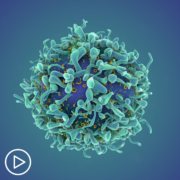
Recovering From CAR T-Cell Therapy | What Can Myeloma Patients Expect? |

|

What Side Effects Are Possible Following CAR T-Cell Therapy? |
Transcript:
Katherine Banwell:
What kind of monitoring takes places in the months following CAR T-cell therapy, and what kinds of medicines are required afterward?
Dr. Beth Faiman:
Oh, excellent. So, the monitoring is usually on the short-term, within the first 30 to 60 days afterwards, oftentimes depending on what your blood counts are showing. You might have to get blood counts tested more frequently. So, that complete blood count shows you the white cells, the red cells. The white cells fight infection. Red cells carry oxygen. Platelets clot the blood. That’s a marker of how well your bone marrow is functioning. It also can be – those innocent bystanders can go low temporarily after this procedure.
So, definitely those CBCs need to be tested, for some people weekly and for some people every other week. And your healthcare team will tell you how often. After that first two to three months and your blood counts are all in good shape, then we can just go oftentimes to a monthly monitoring of the myeloma labs. So, that’s the CBC and the chemistry panel but also the paraproteins in the blood and the urine get monitored.
There’s also another test called a CD4 count that’s something that you wouldn’t have had beforehand. The CD4 count is an immune count that we want to be over 200. Oftentimes, you’ll be on an antibiotic called Bactrim or an inhaled called pentamidine to lessen the chance of a certain kind of infection called PJP, or pneumocystis. So, those are those atypical infections that we’re now seeing with CAR-T cell and other therapies.
And as I mentioned, acyclovir (Zovirax) to protect against shingles is a medication but you’re not going to be on any anti-myeloma medications other than maybe a bone strengthener if you get that intermittently. Fortunately, after CAR-T cell, you don’t have any anti-myeloma therapy as long as you’re in remission.
CAR T-Cell Therapy for Myeloma | What Are the Advantages?
CAR T-Cell Therapy for Myeloma | What Are the Advantages? from Patient Empowerment Network on Vimeo.
How has CAR T-cell therapy transformed care for myeloma patients? Myeloma expert and researcher Dr. Beth Faiman shares results from the KarMMa study that compared CAR T-cell therapy versus a standard regimen, and the benefits of this therapy over time.
Dr. Beth Faiman is an Adult Nurse Practitioner in the department of Hematologic Oncology and Blood Disorders at the Cleveland Clinic. Learn more about Dr. Faiman.
See More From Thrive CAR T-Cell Therapy
Related Resources:

|
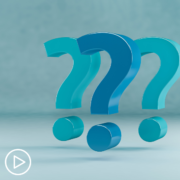
Is CAR T-Cell Therapy Right for You? Questions to Ask Your Myeloma Care Team |

Recovering From CAR T-Cell Therapy | What Can Myeloma Patients Expect? |
Transcript:
Katherine Banwell:
Dr. Faiman, from what you’ve described, undergoing CAR T-cell therapy can be a very intense process. Why would someone consider this option over another myeloma treatment option?
Dr. Beth Faiman:
Yeah. So, the CAR T-cell therapies have really transformed myeloma, in my opinion.
When we first started using CAR T-cell therapies, there was a long wait list because people who had had three, five, seven, 10, 12 prior therapies, they had very few other options.
So, we had ethically assigned scores to people as to who – we’d get one or two slots a month and then we’d have 80-some people on this list. And we’re thinking, “How do we allocate who’s going to get this therapy?” And it’s because you can have a nice, long remission off of all therapy.
It’s a great, great option for most people. Again, I would hope that we can get this moved further into the disease trajectory. There are actually two studies. One was a KarMMa study. It was published in the New England Journal of Medicine in 2023, early part of 2023.
And it showed that when people get this therapy earlier, the Ide-cel first, you can have a longer remission. So, we’re talking about three, four, five or more prior lines of therapy you can get about 11 months with the Ide-cel.
You could even get a longer remission off of all therapy if you move it earlier. Same with Cilta-cel. We had studies and different cohorts and you can be in a long remission. So, think of somebody who’s – myeloma’s incurable. It’s very treatable but it’s incurable for most. And so, you go from the expectation of staying on treatment until disease progression, much like other chronic conditions like diabetes. We don’t stop medicine for diabetes or high blood pressure.
And it’s the same with myeloma and many of the cancers that we treat these days. And so, a CAR T-cell therapy will give patients the option of having that disease free interval where you can go and travel the world. I have patients that have bought RVs after their CAR T-cell therapy and now they’re going around the world – well, not the world. But around the United States.
Katherine Banwell:
The country.
Dr. Beth Faiman:
The country. And just really enjoying life and taking that time off and being realistic, knowing that we have to do bloodwork every month to make sure the myeloma’s still in remission because it can come back. But at least it’s sleeping for right now. So, you can go out and enjoy your life and take those trips and enjoy the little things and the big things.

